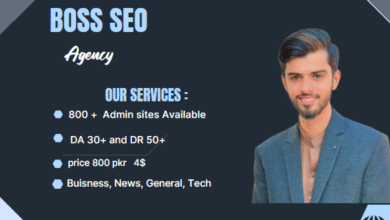Comprehensive 401(k) Solutions for a Thriving Workforce

Table of Contents
- Introduction
- Designing an Effective 401(k) Plan
- Leveraging Technology for Better Plan Management
- Enhancing Financial Wellness Through 401(k) Plans
- Ensuring Compliance with Evolving Regulations
- Evaluating Plan Success and Engagement
- Conclusion
Introduction
In a competitive job market, offering a compelling benefits package can be the deciding factor for top talent when choosing where to work. Among those benefits, a well-designed 401(k) plan stands out as both essential and impactful. Not only does it serve as a pillar for long-term financial security, but it’s also a critical driver for employee satisfaction and retention. Businesses seeking modern, integrated employee 401(k) solutions can gain a distinct competitive edge, positioning themselves as employers of choice.
Employees today seek more than just pay and healthcare; they want benefits that secure their future. A well-designed 401(k) plan makes retirement savings easier and fosters financial wellness and loyalty. Beyond meeting legal requirements, successful plans empower employees and simplify HR tasks. By offering flexible features and investment options, these plans cater to a diverse workforce. To stay effective, 401(k) strategies must evolve, blending smart design, tech, education, and compliance to meet both personal and organizational goals.
Designing an Effective 401(k) Plan
Automatic Enrollment and Escalation
Implementing automatic enrollment is one of the most effective ways to drive participation in 401(k) plans, a type of employer-sponsored, tax-advantaged retirement savings account, as outlined by Investopedia. With auto‑enrollment, new employees are automatically enrolled, reducing the risk of workers neglecting their retirement savings due to inertia or confusion. Coupled with automatic contribution escalation—which gradually increases savings rates each year—these features have been shown to significantly increase both participation and average savings rates across all types of organizations.
Employer Matching Contributions
A strong employer match is one of the most compelling incentives for employees to contribute to their 401(k) plan. By matching a percentage of employee contributions, businesses demonstrate a tangible investment in their workforce’s future. This not only encourages employees to save more but also reinforces the company’s commitment to their well-being. Structuring the match effectively—such as matching contributions up to a certain percent of salary—can further motivate higher employee participation rates.
Diverse Investment Options
Every workforce is composed of individuals with unique financial goals and risk tolerances. A 401(k) plan should therefore offer a wide range of investment options, including target-date funds, index funds, bonds, and socially responsible investments. This flexibility enables employees to tailor their portfolio according to their age, retirement horizon, and personal values, which can lead to greater satisfaction and engagement with the plan.
Leveraging Technology for Plan Management
Streamlined Administration
Modern technology-driven platforms make 401(k) administration more efficient, reducing paperwork and minimizing human error. HR teams benefit from seamless payroll integration, intuitive dashboards, and automated compliance monitoring, thereby freeing up valuable time for strategic initiatives rather than administrative tasks.
Real-Time Data Access
Today’s employees expect instant access to information—including their retirement accounts. Platforms that deliver real-time account data empower individuals to track progress, adjust contributions, and make informed investment choices at any time. This immediacy not only provides reassurance but fosters a sense of control and empowerment over their financial future.
See Also: Navigating Technology Trends 3280164905
Enhancing Financial Wellness Programs
Comprehensive Education
Even the best plan design can fall short if employees lack the knowledge to maximize their benefits. Integrating financial wellness programs—such as on-demand resources, interactive workshops, and one-on-one counseling—helps employees become confident decision-makers. Financially savvy employees are not only more prepared for retirement but are also less stressed and more productive at work.
Emergency Savings Options
Life’s unexpected expenses can threaten retirement security if employees are forced to draw from their long-term savings. Innovative 401(k) designs now include emergency savings accounts, enabling workers to establish a safety net for short-term needs without compromising their long-term financial security. This forward-thinking feature supports overall financial wellness and has been shown to enhance participation and engagement rates.
Staying Compliant with Regulatory Changes
Understanding the SECURE 2.0 Act
The SECURE 2.0 Act introduced key changes to expand access to retirement plans, boost automatic enrollment, and increase catch-up contributions. Employers must update their plan designs and payroll reporting practices accordingly. According to the IRS, these changes also affect how businesses report retirement contributions on Form W-2 starting in 2023.
Regular Plan Reviews
A regular review schedule is integral to ensuring both compliance and competitiveness in your 401(k) offering. Auditing participation rates, investment performance, fee structures, and plan communications keeps the plan attuned to both external regulations and the evolving needs of your workforce. This process also enables timely adjustments, ensuring the plan remains relevant and attractive in the market.
Measuring Plan Success and Employee Engagement
Participation Rates
One of the clearest indicators of a successful 401(k) program is robust participation. Tracking enrollment and average contribution rates reveals whether the plan design and communications strategies are working or if adjustments are needed to drive engagement.
Employee Feedback
Direct input from employees is an invaluable resource for continuous improvement. Anonymous surveys, focus groups, or one-on-one interviews can uncover barriers to participation and identify desired features or gaps in financial education. Adapting the plan based on feedback ensures that your offering resonates with employees and evolves in response to their changing needs.
Conclusion
A thoughtfully crafted 401(k) plan is more than a retirement benefit—it’s a strategic advantage for organizations and a cornerstone of financial wellbeing for employees. By leveraging technology, prioritizing comprehensive plan design, adapting to regulatory shifts, and listening to your workforce, you ensure your plan remains both competitive and valued. Ongoing evaluation and bold adaptation will keep your 401(k) solution at the forefront of employee benefits, meeting the ever-changing demands of today’s market and tomorrow’s workforce.

